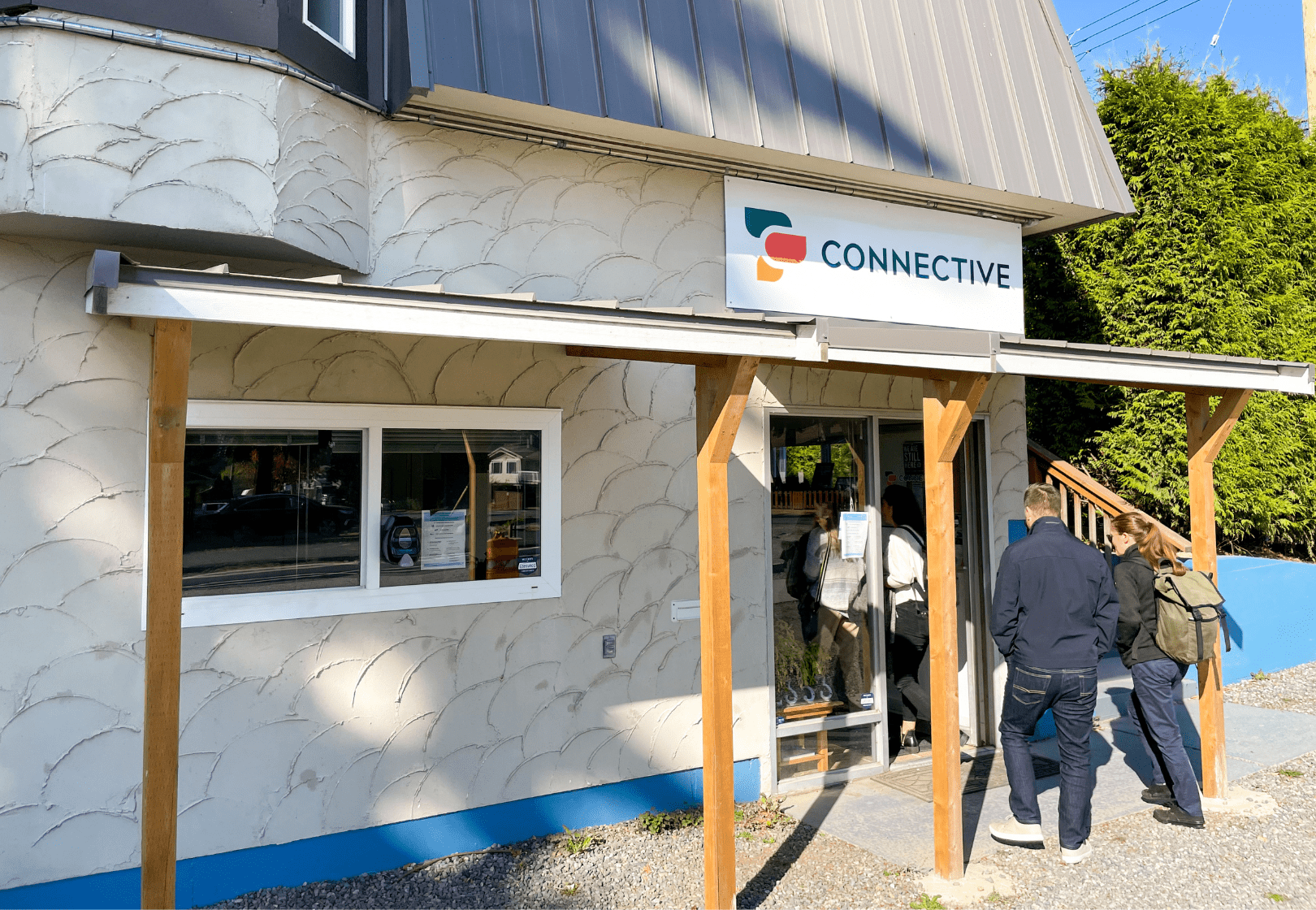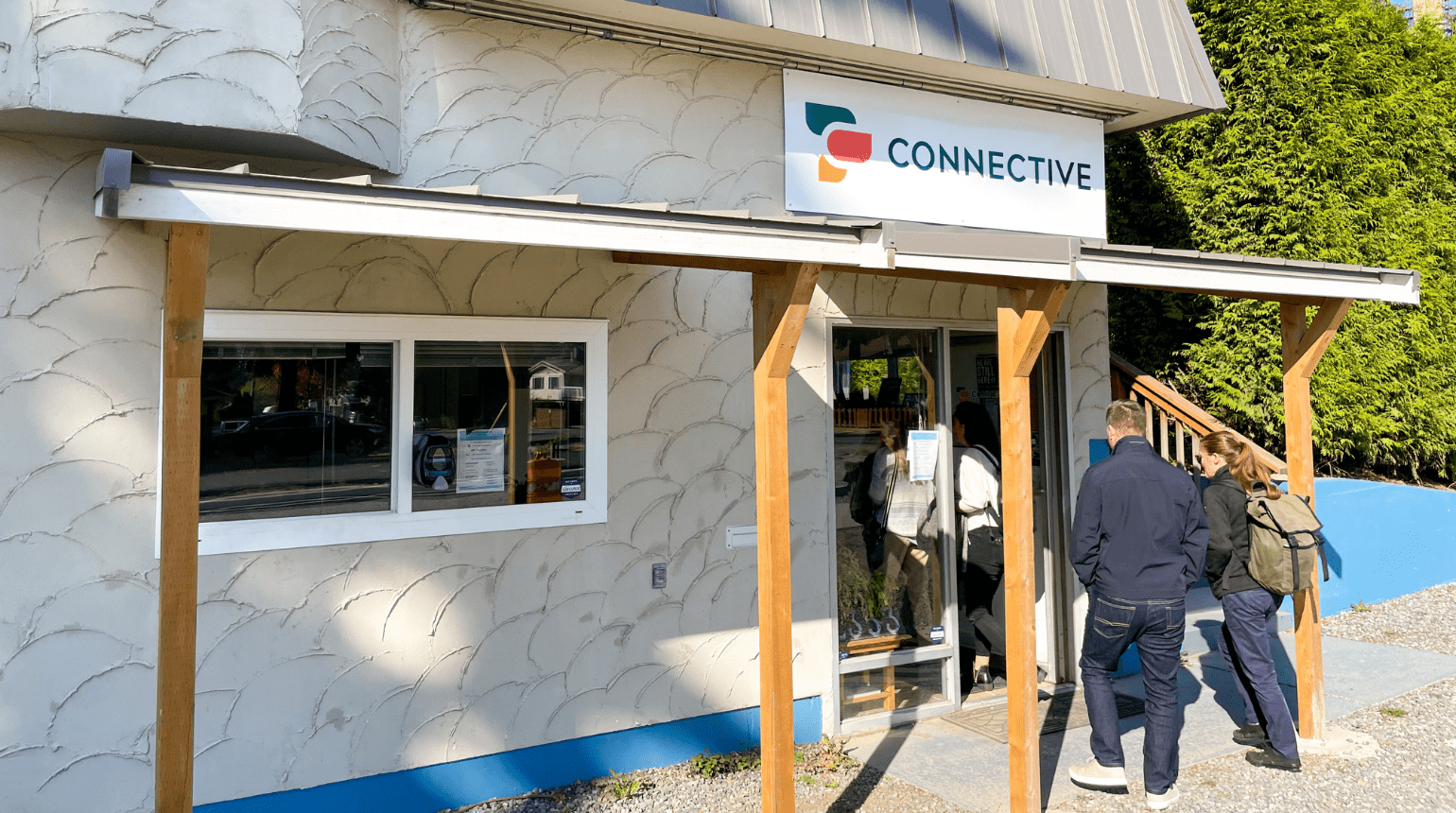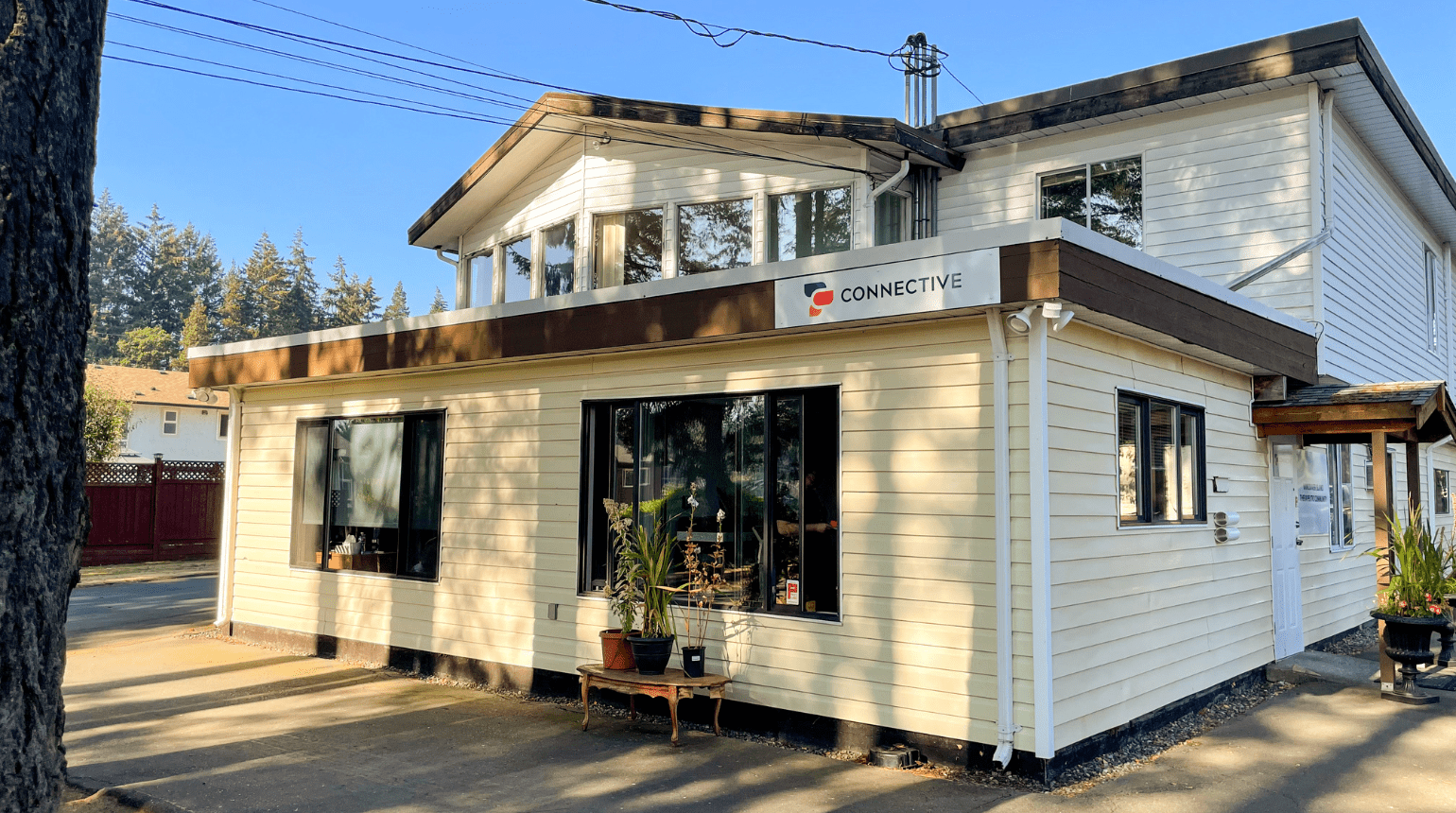Welcoming Nanaimo to Connective
Connective was thrilled to welcome the team in Nanaimo – formerly the John Howard Society Nanaimo– to our community.
Dec 8 2022 | Connective


In September of this year, Connective was thrilled to further expand the reach of our community by welcoming the team in Nanaimo – formerly the John Howard Society Nanaimo – to the Connective name and brand. As a proven leader in innovative service delivery, they have found increasingly diverse ways to meet the evolving needs of their community, both in Nanaimo and in the surrounding areas. The team is honoured to operate on traditional territories of the Snuneymuxw First Nation.
The team in Nanaimo is made up of:
44
Staff
29
Programs
11
Housing Units
““Over the last year we spent a lot of time…assessing how [our] name reflects who we are,” said John Horn, Executive Director of Connective in Nanaimo (previous Executive Director of John Howard Society Nanaimo). “Because we’ve got a lot more diversity in our programs and services, we felt we wanted our brand to recognize that diversity.” “
– John Horn, Executive Director of Connective in Nanaimo
The change to Connective is a way to honor their evolution over the years, while better reflecting all that they are and all that they do today.
As with the team in Kamloops, we are proud to work alongside Nanaimo and to have the opportunity to serve more people, in more places, as we work to create safe, healthy, and inclusive communities for all.
“We’ll be looking at who’s really good at doing what pieces and how can we learn from our colleagues and support each other. That’s part of coming together”
– John Horn, Executive Director of Connective in Nanaimo
With their innovative housing, employment, justice, and community living services, Nanaimo brings a range of expertise to the organization, and we are eager for the opportunity to learn from one another. A particular area of interest is their nationally and internationally recognized restorative justice (RJ) program.
Spotlight on: Restorative Justice
Restorative justice, in its modern sense, has been around for several decades, but its roots stretch much further into the past where it has ties to Indigenous Nations around the world. The way we understand it today is also a product of work in faith-based communities, in the prison abolition movement, and the alternative dispute resolution movement.
In modern practice, RJ begins with a broader set of questions than those typically found in Canada’s traditional criminal legal system.
“In the criminal legal system, they’re asking questions like, what law was broken, and who broke that law, and what is the appropriate punishment based on that? But the questions we ask are different. They look more like, what happened? Why did it happen? Who was harmed? What does repair look like? What needs have arisen due to this harm?”
– Beth Stupple, referencing Howard Zehr’s seminal work, Changing Lenses: A New Focus for Crime and Justice (p.271)
With this desire to go beyond the surface level, restorative justice is, first and foremost, nuanced. Its approach is holistic, well-rounded, and flexible, leaving space for context and for all voices to be heard.
In many ways, RJ defies definition; it is less a singular ‘thing’ or process, and more a set of principles or potential ways of responding to harm.
For Beth and her team in Nanaimo – Juanita, Loraine, and Grace – restorative justice is “a response to harm, conflict, and crime that focuses on repairing relationships, on accountability, and on meeting the needs of those who were hurt…It’s about finding ways to move forward that work for as many of the affected people as possible, and that addresses – to the best of our ability – the root causes of harm.”
When it is appropriate to do so, the process involves bringing the perpetrator(s) of a crime together with the victim, and any relevant members of the community, to discuss the effects of the harm that was caused, and what repair might look like. It’s a voluntary process, on all sides, and involvement of the victim and community can vary from case to case. In some instances, where the victim chooses not to be involved or where their direct involvement would be inappropriate, Beth and her team act as a stand in and try to navigate what community repair might look like.
Whatever form the process takes, RJ creates space for the perpetrator of a crime to take accountability for their actions and the resulting effects and provides the victim or community with some form of reparation, as decided on by those involved
Welcome to Nanaimo
A few photos from a recent trip to Nanaimo, where Connective staff got to meet with Nanaimo staff and visit program locations
In the traditional legal system, we may view sentencing as the processes endpoint – the individual’s punishment may be shortened for good behaviour, or lengthened in response to breaches, but by and large, the exploration of the crime and its effects has ceased.
In restorative justice, however, the process goes further. Beyond reparation, Beth and her team look to foster reintegration where there was division and work to strengthen community harmony to prevent further harms from occurring.
From its focus on both individual and social dimensions of responsibility, to its commitment to supporting behaviour change, and its deliberate centering of victims and their needs – top to bottom, RJ looks quite different from what we may be used to in the traditional legal system.
In this way, RJ asks much more of those involved. Practitioners must provide for the needs of those who have suffered harm, and guide their involvement in the process without retraumatizing, while also respecting and navigating the complex realities and potential traumas of those guilty of the crime in question – at times it is a delicate tightrope to walk.
As Beth explains, it’s a process built around flexibility. “We offer a lot of choices. We offer pauses and breaks when people need it, and we are consistently checking for trauma responses, and offering grounding exercises and support when needed.” It is important that the process remain responsive to the needs of those involved, so the Nanaimo team “always try to say, what would help this feel safer for you? And give people the opportunity to tell us what kind of process they need.”
When everything comes together, the results can be extremely profound, but as Beth reminds us, it isn’t easy to get there.
“One of the classic myths about restorative justice is that we’re the easy way out; this idea that people are getting let off the hook…It’s not easy to take accountability! Some people might think it easier to face incarceration than the people that they harmed and acknowledge how that harm impacted their lives. Especially in a society where we aren’t actually supported and taught to be accountable for our actions.”
– Beth Stupple
Seeing the transformative impacts of RJ – from the repair of relationships to the embracing of educational opportunities – is inspiring. Through their work, the team in Nanaimo has helped:
- Survivors of assault supported to feel safer in their community
- Youth found guilty of graffiti connected to an artist mentor and led to create beautiful local mural art that fulfills their need for expression
- Break and enter victims work through their PTSD symptoms by meeting with the person responsible, and understanding why they did it
- A perpetrator of sexual assault receive education around toxic masculinity, rape culture, and consent, and go on to advocate for others in situations of harassment
These examples are just a fraction of many, illustrating the powerful direct and indirect outcomes and possibilities when you allow community the space to come together and repair harm.


